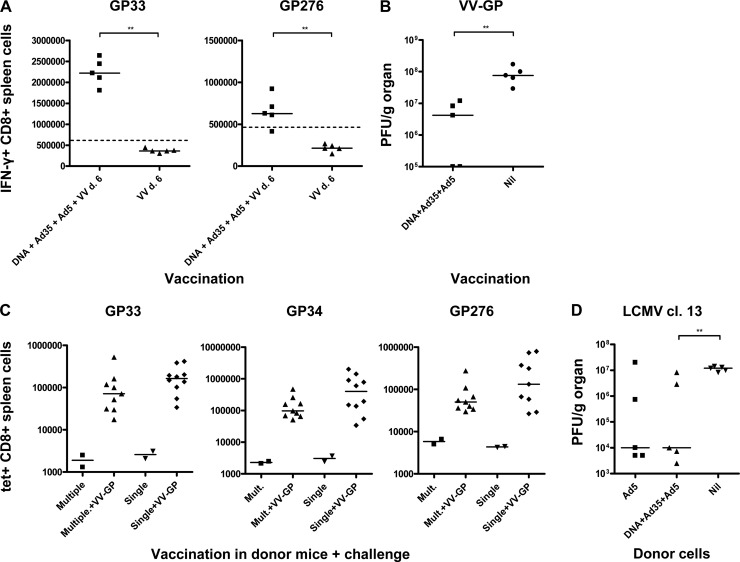Fig 6.
Memory CD8 T cells induced by multiple immunizations with DNA, Ad35, and Ad5 retain proliferative and protective capacity. Mice previously vaccinated with DNA, Ad35, and Ad5 or left untreated were challenged i.p. with 2 × 106 PFU VV expressing GP, and 6 days later, the numbers of GP-specific CD8 T cells in the spleen (A) and viral loads in the ovaries (B) were determined. The dotted lines denote average cell numbers in multiply vaccinated mice prior to VV challenge (Fig. 4A). (C) For a cell-for-cell comparison of proliferative capacity, 104 GP-specific CD8 T cells (determined by staining with tetramers for GP33-, GP34-, and GP276-specific T-cell receptors) from CD45.2 mice vaccinated with DNA, Ad35, and Ad5 (multiple [Mult.]) or Ad5 alone (single) at least 60 days earlier were transferred into naive CD45.1 recipients. On the next day, recipients were infected i.p. with 2 × 106 PFU of VV expressing GP of LCMV; uninfected recipients served as controls. Six days later, GP-specific donor-derived CD8 T cells in the spleen were enumerated. Data are pooled from two independent sets of adoptive transfer. (D) For a cell-for-cell comparison of antiviral capacity in the context of a chronic viral infection, 105 GP-specific CD8 T cells from mice previously vaccinated with DNA, Ad35 and Ad5, or Ad5 alone were transferred into naive CD45.1 recipients. On the next day, recipients were infected i.v. with 2 × 106 PFU LCMV clone (cl.) 13, and spleen viral titers were determined 10 days later. Mice receiving no cell transfer served as controls. Each point represents one animal. **, P < 0.01.

